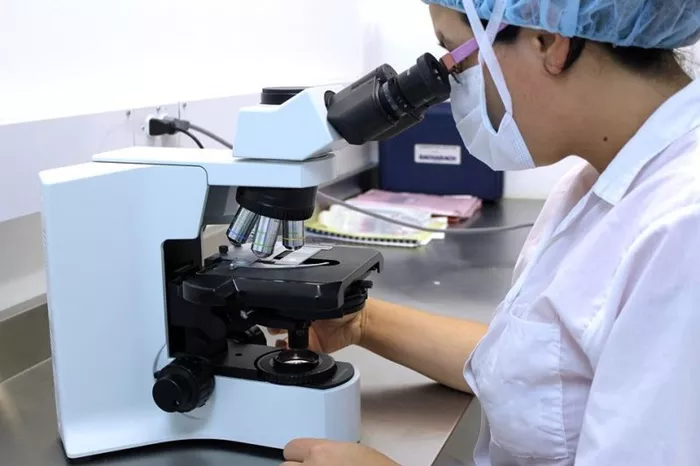Researchers at the Yong Loo Lin School of Medicine, National University of Singapore (NUS Medicine), have made a groundbreaking discovery in understanding how cells manage fat molecules, a crucial process for maintaining cellular health. Published in the Proceedings of the National Academy of Sciences (PNAS), the study reveals the vital role of a protein, Spinster homolog 1 (Spns1), in the movement of fats within the cell.
The research, led by Associate Professor Nguyen Nam Long from the Department of Biochemistry and Immunology Translational Research Programme (TRP) at NUS Medicine, highlights Spns1 as a key “gatekeeper” protein that regulates the transport of lysophospholipids – a specific type of fat molecule – to lysosomes, the cell’s recycling center. These fat molecules are broken down and repurposed for various cell functions, ensuring the cell remains healthy and prevents the harmful buildup of fats.
Lysosomes process fats and other cellular materials through three main pathways: endocytosis, phagocytosis, and autophagy. In endocytosis, materials from outside the cell are enveloped by vesicles and sent to the lysosome for breakdown. In phagocytosis, immune cells, like macrophages, engulf damaged particles or pathogens and direct them to lysosomes. Autophagy, the third process, involves the cell self-cleaning, breaking down damaged organelles like old mitochondria by enclosing them in an autophagosome, which then fuses with the lysosome for recycling.
Once processed in the lysosome, fats play several critical roles in the cell, including the maintenance of cell membranes, energy production, and cellular communication. Certain fats, such as sphingosine-1-phosphate (S1P), act as signaling molecules that regulate key processes like cell growth, movement, and survival.
In a previous study, NUS Medicine researchers identified that dysfunctions in Spns1 can lead to the accumulation of lipid waste inside cells, causing lysosomal storage diseases (LSDs). These rare genetic disorders are linked to the failure of the lysosome’s recycling function, resulting in diseases such as Gaucher, Tay-Sachs, Niemann-Pick, and Pompe diseases, as well as neurodegenerative conditions like Parkinson’s and Alzheimer’s.
Collaborating with Professor Xiaochun Li’s team at the University of Texas Southwestern Medical Center, the researchers employed cryoelectron microscopy (cryo-EM) to study Spns1’s interaction with lysophosphatidylcholine (LPC), a lysophospholipid in the lysosome. This research provided valuable insights into how Spns1 senses environmental changes within the cell and facilitates fat recycling at the atomic level.
“Understanding Spns1’s role in recycling fat molecules is a critical step towards developing treatments for rare diseases caused by its dysfunction,” said Associate Professor Long. “Our research could pave the way for innovative therapies that target lysosomal storage diseases.”
The study also demonstrated that Spns1’s function depends on specific environmental signals, which control when the protein opens and closes to allow fats to exit the lysosome. Mutations in Spns1 can disrupt this process, leading to the accumulation of waste and the onset of disease.
Ms. Ha Thi Thuy Hoa, co-first author of the study, expressed excitement about the potential impact of this research: “We are now focused on understanding the opposite phase of Spns1’s transport cycle, where it opens toward the rest of the cell. This knowledge could help in the development of targeted drugs for lysosomal storage diseases.”
The team is also investigating small molecules that could regulate Spns1 activity, offering hope for the future development of treatments aimed at combating rare diseases linked to lipid accumulation.
Related topic:
Study Finds Ethnic Disparities in Brain Health Among Rural Aging Adults
Study Reveals Cannabis Warnings Ineffective for Pregnant Users
Study Reveals Global Gaps in Mental Health Treatment

